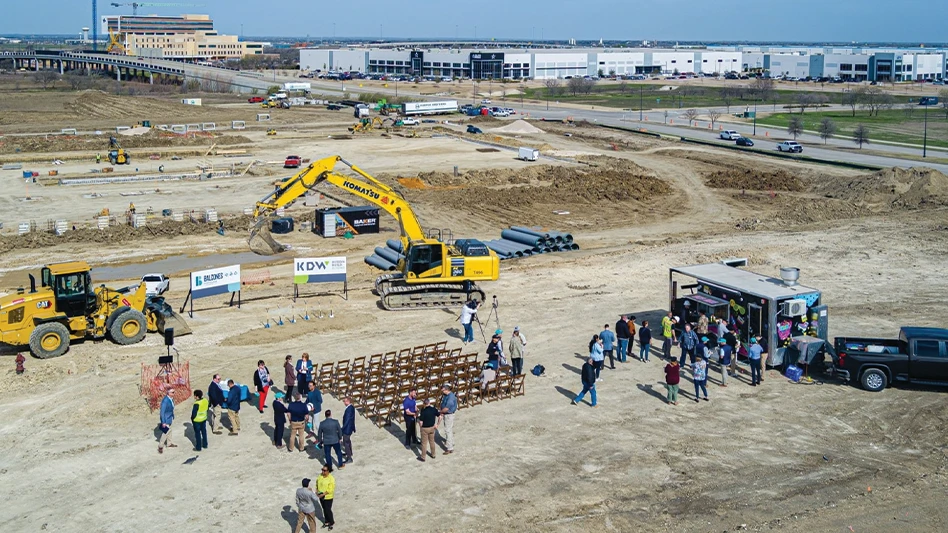Soaring freight rates could continue for the foreseeable future. How are the escallating costs affecting scrap metal recyclers and how will they deal with them?
The booming export market is creating a situation where the cost to ship material offshore is becoming more expensive. Prices encountered to ship ferrous scrap in particular have climbed sharply during the past year, with some reports that freight rates have more than doubled in the past several months.
The higher costs are creating greater pressure on shippers, as well as consumers. Freight rates for ferrous scrap are not the only ones rising, as rates to ship containers holding other metals also are increasing. The question many are asking is: How long can the soaring prices last?
According to a number of scrap metal watchers the higher prices could continue through most of next year.
| Bulk Biography |
|
For ferrous shipments, ocean-going vessels come in several typical sizes: Panamax, HandyMax and Cape Max. The size of the vessels is indicative of how much cargo these vessels are able to handle. Typically, the smallest bulk vessels operating are the Handy Size vessels, which can handle between 20,000 to 30,000 dead weight tons (DWTs). The next size is the Handy Max, which can handle between 40,000 and 50,000 DWT; the next largest is the Panamax, which can move between 60,000 to 70,000 DWT, while the largest vessels are the Cape Size vessels, which can haul as much as 200,000 DWT of cargo. |
CROWDED CARGO HOLDS. One factor for the opinion that freight rates could remain at their levels (or even higher) is the almost insatiable demand from Chinese sources for scrap metals, iron ore and other base commodities. As China’s manufacturing sector booms, the country’s demand for raw material is expected to continue to swell.
While there is a sense that purchases will ease back modestly for a short period of time, the overwhelming consensus is that the demand is strong enough to continue substantial flows of materials from throughout the world to China.
Another factor that could keep freight rates at a significant level for the foreseeable future is the lack of new shipping capacity. While there is some construction of large bulk vessels taking place in various parts of the world, the time it takes to build these vessels will keep the supply tight for now.
Still another factor that is keeping people off balance with freight rates has been the dislocation of the vessels. While China has been bringing in commodities from other parts of Asia, North America and Europe, many of these very same countries are not taking back much material, creating an imbalance. This is boosting the cost to reposition vessels.
This confluence is helping propel ferrous scrap prices to significant heights. However, a number of vendors are expressing apprehension that with freight rates showing no signs of either decreasing or even slowing their ascent, some export buyers could opt out of the market, sending prices cascading back downward.
A mixed blessing. The impact of higher freight rates is having a mixed impact, with both inbound and outbound cargo becoming more expensive. With the cost rising to bring some bulk goods such as steel slabs into the country, domestic steel production could pick up.
However, at the same time, some note that with less steel entering the U.S. market, the overall generation of new scrap supply could still soften if manufacturing overall is hurt, exacerbating supply shortages that are plaguing some scrap metal recyclers.
"Unless something significant happens," says Stephan Miller, president of Ferrosource Inc., Oviedo, Fla., "I can’t see prices materially changing. The only thing that could change it is a large reduction in purchases."
Ferrous scrap prices are remaining strong, as are other steelmaking materials, such as iron ore and coke. "As long as China keeps buying, (freight) rates will remain high," Miller remarks.
Reportedly, freight companies are discussing building new vessels with shipyard owners. However, at a cost of tens of millions and a lag time of a year or more, it could be awhile before any new capacity comes on line. And, Miller adds, the volatile nature of the business would likely keep many companies from investing too heavily in such a project when prices for the raw material could dip during the building phase.
| Keeping One Freight Segment on Track |
|
Recyclers and industrial shippers are among those most affected by any woes within the freight sector. Commercial Metals Co., Dallas, reported net earnings of $12.6 million( or $0.44 per diluted share) on net sales of $830 million for the quarter ending November 30, 2003. This compares with net earnings of $2.2 million or $0.08 per diluted share for the same period in fiscal year 2003 on net sales of $636 million. But CMC chairman, president and CEO Stanley A. Rabin predicts that increasing costs—including freight costs— could bite into profit margins in subsequent quarters. "Our outlook for the balance of the fiscal year remains favorable, albeit uneven," says Rabin. In the current quarter, Rabin predicts that manufacturing margins are likely to be squeezed as the impact of higher volumes and improved pricing are offset by continued increased raw material costs as well as higher energy and freight costs. For those who thought that rail was a dying transportation method, a recently completed report and audit demonstrates why railroad freight companies may finally have reasons to upgrade their infrastructures. Rail traffic in the U.S. has increased 64 percent since 1980 with continued growth forecast through 2020, according to a study conducted by the U.S. Department of Transportation’s (DOT) inspector general’s office. This escalating traffic has been combined not with increases in total usable track mileage, but rather with a steady decline in track miles resulting from several mergers of Class I railroad companies. According to a Reuters report summarizing the DOT study, "the audit found that problems are magnified by numerous infrastructure bottlenecks, including undersized bridges and tunnels, track design limits and outmoded communication systems." Transportation authorities in several regions are already working on plans to ease rail congestion, although funding questions often halt plans before they go very far. The problem is reportedly acute in the Chicago area and also along the Atlantic coast between Boston and Washington, where Amtrak passenger trains share tracks with freight companies. The Reuters report notes that Amtrak is planning $460 million in capital improvements, but that 70 percent of its trains run on freight-owned tracks. |
Bursting the bubble. A number of scrap processors have noted that prices for many of the ferrous and nonferrous metals have soared very high very quickly. Recognizing that a bubble may exist identifies a problem. However, what is a large exporter to do? One large West Coast exporter says his company is trying to limit its sales to only the best customers, preventing them from being hurt by uncertain markets.
Just as the large bulk ships have been pushing through sharp increases, container lines have also jumped into the fray by announcing ambitious price hikes for various types of container sizes and for scrap grades in particular. The Westbound Transpacific Rate Agreement, a collection of about a dozen container-shipping companies, has announced multiple price increases. The first one was implemented Dec. 1, 2003, while the second increase is slated to go into effect this spring.
The ratemaking group is looking to push through a two-stage increase for scrap metal shipped from the U.S. to Asia, with the Dec. 1 increase adding $100 per 40-foot container. The second half of the increase is slated to take place April 1, 2004, and is also expected to be $100 per 40-foot container.
The West Coast exporter says that despite the rapidly climbing rate prices, "We can’t see any weakness. There is a big demand in China. While scrap is a beneficiary, iron ore has been the biggest driver. China, as well as Korea and, to a lesser extent Japan, has been buying significant blocks of iron ore from throughout the world."
Ronnie Cecil, with CRU International, a U.K.-based consulting firm, says the rates "are at an incredible level." Even more stunning, he feels that rates should continue to climb through next year. While there could be quite a wait before additional new capacity comes on line, some companies are modifying the vessels that they presently own to see if they can take advantage of the higher freight rates by holding more cargo.
In a presentation given in November at the Gorham Technologies "Market Outlook for Iron & Steel Scrap and Scrap Alternatives" event, Miller noted the following: "The most alarming change is the rise in demand for ferrous raw material from the countries in the Far East, especially China. The demand for scrap, HBI and pig iron in this region has caused severe dislocations is the historical trade of these raw materials."
Miller added that, coupled with the strong demand and higher freight rates, the lead time for receiving deliveries is growing. "What used to be a 90-day process has now become one that is a 180- to 240-day process."
Reflecting these higher freight rates, Sydney Levine, president of Shipping Intelligence Inc., a New York City-based consulting firm for the break cargo industry, says he saw one vessel that was rented for $25,000 a day re-let to another company for about $50,000 a day.
While presently there is a flood of orders for vessels, Levine notes, "The kicker is that this market is very cyclical. When the new ships that are being built are completed, some companies will go into default."
In the meantime, while many express optimism that the freight rates will continue to remain high, the reality is that rates are operating in a bubble atmosphere. And, with any bubble, there is an inevitability that the bubble will burst, resulting in a sharp decline in freight rates.
The only question is when the bubble will burst. In the meantime, it’s full speed ahead for shipping companies.
The author is senior editor and Internet editor of Recycling Today and can be contacted via e-mail at dsandoval@RecyclingToday.com.
Get curated news on YOUR industry.
Enter your email to receive our newsletters.

Explore the January 2004 Issue
Check out more from this issue and find your next story to read.
Latest from Recycling Today
- Recycled steel price crosses $500 per ton threshold
- Smithers report looks at PCR plastic’s near-term prospects
- Plastics association quantifies US-EU trade dispute impacts
- Nucor expects slimmer profits in early 2025
- CP Group announces new senior vice president
- APR publishes Design Guide in French
- AmSty recorded first sales of PolyRenew Styrene in 2024
- PRE says EU’s plastic recycling industry at a breaking point






